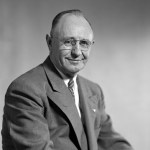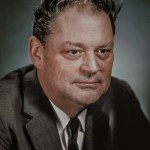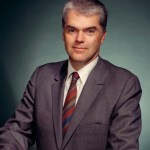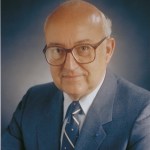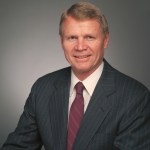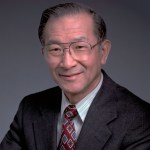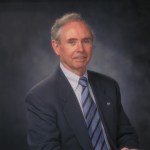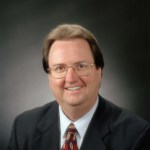
H. Julian Allen
Former Center Director at NASA’s Ames Research Center
H. Julian “Harvey” Allen served as the second Ames Center Director, from October 15, 1965 to November 15, 1968.
Allen arrived at Ames on April 13, 1940 after transferring from the Langley Memorial Aeronautical Laboratory like many early Ames personnel. Allen had worked at Langley for four years, beginning his job as a junior engineer just a few years after he had graduated in 1932 from Stanford University where he studied engineering and aeronautics.
While at Langley, Allen worked in the Variable Density Tunnel Section led by Eastman Jacobs. Allen made a key contribution to the development of laminar-flow airfoils, simplifying what had been very laborious calculations. That work culminated in the report, “General Theory of Airfoil Sections Having Arbitrary Shape or Pressure Distribution,” which was published after Allen had already become the head of the Theoretical Aerodynamics Section at Ames.
Known for elegant mathematical work in order to simplify and generalize problems, Allen’s most enduring theoretical insight is the blunt body concept, which remains relevant for hypersonics and spaceflight to this day. Allen and his colleague Alfred Eggers published the theory of blunt bodies in a landmark paper in 1953. He continued his research into hypersonics, designed novel wind tunnels for that research, and managed much of the center’s work as an assistant director.
When Smith DeFrance retired after leading Ames for 25 years, Allen was an established and admired presence among the center’s staff, and he had the most management experience of the group. His relatively short three years as director were—unlike his research career—unremarkable. Allen thought of himself first and foremost as a researcher. At the height of Apollo, Allen kept Ames focused on research and maintained the distance from Washington that had been more of an asset and less of a liability in the NACA era. Allen recognized this, and he looked to his colleague Clarence Syvertson to be his deputy shortly before his retirement and the selection of Hans Mark to succeed him. Mark kept Syvertson as his deputy, and Allen maintained close relationships with people at the center as he pursued his own research again in retirement, unburdened by management. Always curious and inquisitive, some of Allen’s research in retirement included the study of owl feathers to understand why their flight could be so silent.
Allen was a lifelong bachelor and well known as a bon vivant, enjoying classical music and playing the piano, cooking, and driving luxury cars. The endearment that Ames staff developed for him is reflected in numerous ways, including the name of the Ames retiree group, “The Owl Feather Society” and the highest award that Ames offers for a research paper: the H. Julian Allen Award. He passed away in 1977.


























